Nos médecins et chirugiens dentistes ont décrit en détail un certain nombre d’interventions faites sur des patients. Cette section vous permettra de mieux comprendre comment la clinique fonctionne, et les solutions retennues par nos dentistes pour traiter ses patients en fonction de leur problèmes dentaires.
Nous avons décidé de placer un Implant dans la partie supérieure gauche en position 4 position d’un patient Anglais de sexe masculin après avoir passé une radio panoramique. Sa dent avait été extraite 3 mois auparavant, l’espace était relativement frais. L’implant: Pitt Easy V-TPS. 4 * 10. A été placé avec succès.
Un de nos patients Irlandais avait déjà perdu deux dents de devant que nous avions remplacées par des Implants dentaires il ya 3 mois. Aujourd’hui, nous sommes déjà lau stade de montage du culées. Afin de protéger la restauration, nous avons recommandé la production d’une protection nocturne que le patient a accepté cette solution. C’est pourquoi nous avons également fait des impressions pour une morsure élevée pour cette protection nocturne. Cette sprotection nocturne peut être produite dans un court espace de temps et elle s’inscrit dans le séjour du patient en Hongrie.
After missing teeth for a long time, our Danish patient will receive new teeth in positions upper right 4 and 6 with the help of implants. Following the sinus lift we placed the implants, and gave the patient antibiotics and painkillers (Dalacin C and Cataflam). The patient did not require a temporary restoration. In the next stage – in 4 months time – the patient will receive their teeth.
A 63 year old female patient wants implants in positions upper right 3, 5 and 6, because teeth have been missing in these positions for a long time. The lady’s sinus cavity was dilated thus the bone layer needed to support the implants is too thin.
An American female patient presented with multiple missing teeth and an unremarkable resorbtion in the jaw ridge. In order to be able to place implants in positions 23,24,25,26 it was necessary to carry out a minimal sinus lift. The sinus lift is a surgical treatment which we usually carry out with local anaesthetic. In the case of this patient we used BioOss, a bone replacement material of animal origin. Because the sinus lift was not significant we carried out the bone replacement and placing of implants in only one session. We also used BioGide membrane to help the tissue to heal quicker. The collagen membrane, also of animal origin, helps the wound to heal and has a positive effect on bone regeneration as well. We will remove the patient’s stitches next week. Then a 6 month osseointegration period is necessary before we will finally be able to place the new porcelain teeth. Unusually, the lady did not want a temporary denture/crowns for the interim period.
A returning middle-aged Hungarian gentleman complained of sensitive gums which bled easily when pressure was applied in the area of tooth 47 where a dental implant was inserted many years ago. During the examination we diagnosed inflammation and periimplantitis around the implant.
The inflammation around the implant had penetrated to deeper levels and had caused the bone tissue to disappear. The cause of an infection of this nature is usually bacterial. In the pockets which had developed between the dental implant and mucosa, with a lack of regular and thorough mouth and tooth care the bacteria can easily colonize and cleaning off the tartar can be difficult. If the infection also reaches the bone tissue the implants can loosen and if left untreated the patient may lose them. Our patient’s inflammation around the implant was indeed at an advanced stage. The tissue decay had loosened the implant as well therefore we removed it. After proper cleansing of the wound we carried out a new implantation. The patient will get a new crown after the healing period.
A 26 year old patient came to us because 2 of his incisors had broken in a childhood accident and were built up with composite fillings. According to him this solution is aesthetically not satisfactory and he would rather have crowns. We took a panorama x-ray and provided a treatment plan. The patient accepted the plan. By grinding down the teeth, we prepared the 2 incisors for zirkonium crowns and took a precision impression.
We fitted zirkonium crowns to a young Norwegian patient’s upper front teeth (from 13 to 23). Aesthetics were a very important factor for the young man, therefore he chose the more expensive but more aesthetic zirkonium, while we resolved his other missing teeth (lower and upper, 4 to 7) with porcelain crowns fused to metal. The restoration was functionally and aesthetically successful, and the patient satisfied.
A middle aged patient returned to our clinic because of damage to ceramic units of a previous placed bridge. The damage occurred a night therefore, in order to protect the upper and lower round bridge, we recommended the patient wear a bite-raising nightguard. Because this is not an extreme case of denture grinding, a thin guard is sufficient. We took an alginat impression for the nightguard. The production of the guard takes 1-2 days.
A 52 year old Norwegian presented for the metal frame tryout. An upper porcelain fused to metal restoration will be produced from upper right 7 to upper left 7. We determined the tooth colour which was agreed with the patient. Because there are natural teeth missing over the whole length of the upper, it was possible to choose a tooth colour differing somewhat from the original colour. The lady’s lower jaw also lacked teeth therefore we will place two lateral bridges in the lower region at some point.
Un homme d’âge mûr s’est présenté avec 1 dent manquante du côté supérieur gauche. Pour la première étape du traitement, nous avons terminé la préparation, effectué une empreinte et placé la couronne temporaire. Au stade actuel, nous avons créé et testé la structure métallique du pont céramo-métalliques, et nous avons reproduit un modèle de la morsure du patient avec de nouveaux Futár-D. Le test a été concluant et et la hauteur de la prothèse idéale.
One of our American patients presented a few days previously with dental restorations in a bad condition. His/her expectationwas that we would produce an upper and lower round bridge on his/her existing implants. At the first treatment we prepared the teeth in the lower jaw, grinded them down, exposed the implant sites and took a precision impression. Today we prepared the left 3 in the upper jaw. We exposed the implants existing int hat region and placed impression caps into them. We then took a precision impression. Following the production of the round bridges at the next treatment the round bridges were fitted to the upper and lower implants. After permanently fitting the bridges, the patient could smile again!
A 23 year old Irish patient presented following many previous dental treatments. We found 3 well placed implants in the patient’s upper jaw, but the abutments and many of the young lady’s own teeth were in an eroded and abraded condition. We fitted zirconium and porcelain fused to gold crowns and bridges, and glass fibre post cores, to the implants and the patient’s own teeth. Here we were able to save 2 roots which were still in a good condition. The patient’s teeth show that during previous treatment acute complaints were indeed carefully attended to but no attempt was made to solve the probable causes of the problems: nocturnal grinding (bruxism). On our recommendation the young lady also received a nightguard (bite raising splint for night time use).
An upper porcelain fused to metal round bridge with post cores was produced swiftly within 1 week in the dental technical laboratory for a 60 year old English female patient. For the fitting and cementations we used FujiPlus cement. The height of the bite was fine. We took an alginate impression for the patients bite raising nightguard. The patient can collect the nightguard in 2 days’ time. We provide the patient with further oral hygiene advice. She needed this on the basis of the condition of the oral cavity. The patient was very satisfied with the treatment and had the opportunity to see the sights of Budapest whilst waiting for her new teeth.
A 32 year old Norwegian lady came to us following her second pregnancy as her dentition had deteriorated significantly following the births. We prepared all of her upper teeth, took impressions of the tooth stumps and produced a temporary bridge.
The patient wanted full porcelain crowns, where the crown frame is also made from zirconium-oxide. In this instance we produce the frame using 3D computer scanning techniques which enables better precision and aesthetic results in the finished product. The laboratory procedure is therefore more time consuming and the materialas well as the method make the process more expensive but the look of the crowns is very important to this Norwegian patient.
We root canal treated the upper left 2 tooth of a 40 year old French male patient. We determined the length of the root canal with electronic measuring equipment. The root canal required mechanical … . Following the disinfection and drying of the root canal, we used Sealapex for the root filling and Fuji IX cement for the cover filling.
Un jeune patient Norvegien de sexe masculin avait du mal dormir depuis longtemps, se réveillait fatigué et avec des mots de tête et des raideurs dans la nuque. De plus sa gencive était régulièrement gonflée et ses muscles de la mâchoire tendus, révélateur de son sommeil toute la nuit avec les dents serrées. Cette affirmation est appuyée par le fait que nous avons constaté des signes d’usure anormale à certains endroits sur ses dents. Nous avons produit pour le patient une protection nocturne qui permettra d’éviter la crispation constante de ses dents et protégera ses dents contre l’abrasion.
A Hungarian patient presented with swollen gums. 2 months ago the patient received an implant in the upper right 4 position. The swelling was between the upper right 4 and 3. We checked the implant by taking an x-ray and found everything to be in order. In order to disinfect the swelling we cleaned the swollen area with Betadin. It is likely that the patient scraped the gum with some sort of hard food because we did not detect any pathological mutation.
Un de nos patients Hongrois a été traitée il ya 3 semaines en Allemagne. En bas à gauche la dent 8 (dent de la sagesse) a été extraite car , selon les dires du patient, il y avait un kyste autour. Le patient s’est présenté à notre clinique avec le visage tuméfié et se plaint d’une vive douleur lancinante. Nous avons abondament rincé la région avec Hyperol Betadin et retiré des éclats d’os provenant de la plaie. Nous avons finalement traité le patient avec des antibiotiques. Comme tous les éclats d’os ont été supprimés avec succès, la douleur va s’atténuer dans un court laps de temps et de l’enflure va diminuer.
Un homme agé de 31 ans s’est présenté avec des maux tête permanent et s’agravant de jours en jours. En outre, la décoloration était visible à l’œil nu sur les premières molaires inférieures. Le diagnostic du patient était exacte : nous étions confrontés à plusieurs caries. En bas à droite et à gauche la dent numéro 4, nous avons préparé obturations photopolymère ayant l’avantage de se lier immédiatement par la lumière sans attendre 1 à 2 minutes et possèdant des propriétés esthétiques.
A young male Norwegian patient had been sleeping badly for a long time, waking up tired, with a headache and stiff neck. Additionally his gum was regularly swollen and his jaw muscles hurt which is indicative of his sleeping the whole night with clenched teeth. This is also supported by the fact that we found signs of wearing in some places on his teeth. We produced for the patient a nightguard which will prevent the constant clenching of his teeth and will protect his teeth from abrasion.
A 29 year old patient complained of an annoying but not unbearable tooth pain which had been present for several days. We found deep decay in the upper right 3 tooth where we used Dycelal disinfectant in the indirect capping of the pulp, which we covered with Fuji II.LC glass ionomer cement.
The ortho-pantograph x-ray of our 50 year old Italian femaile patient showed that her upper right 6 and upper left 6 (or rather their remains) needed extracting and replacing. The extracted teeth were replaced with bridgework according to the plan. In the first stage of treatment we prepared the right and left upper 5 and 7 teeth, and removed the right and left upper roots (radixes). We took impressions for the dental laboratory and produced temporary crowns. The dental technical laboratory will produde the final crowns in under 1 week and the Italian lady’s next visit will be due in only 2 weeks’ time. This way she was able to purchase an economy flight ticket.
A young Swiss man complained of a sharp throbbing pain in his lower left teeth. The problem was caused by the severely inflamed 37. We trepanated and extirpated this number 7, which means we opened the pulp chamber and removed the inflamed nerves. We carried out the widening and cleaning with WDW Gold. We placed a Sealapex root filling and then a Fuji IX tooth filling.
A 60 year old English gentleman presented with many problems. Firstly we surgically removed teeth 12,44,45 and 48. We produced the treatment plan for the replacement of the teeth but he did not want to begin the restoration treatment on this visit.
Secondly in the right upper and lower quadrants it was necessary to remove tartar. Following the ultrasound treatment and cleaning we carried out a curettage in the deeper parts of the gum pockets. This is necessary because the deeper parts of the gum pockets are not reachable with ultrasound scaling. With the help of the appropriate instruments these areas can be cleaned for which local anaesthetic is usually required. On finishing treatment we provided our patient with oral hygiene advice for which the patient was especially grateful.
Kreativ Dental Clinic © 2025
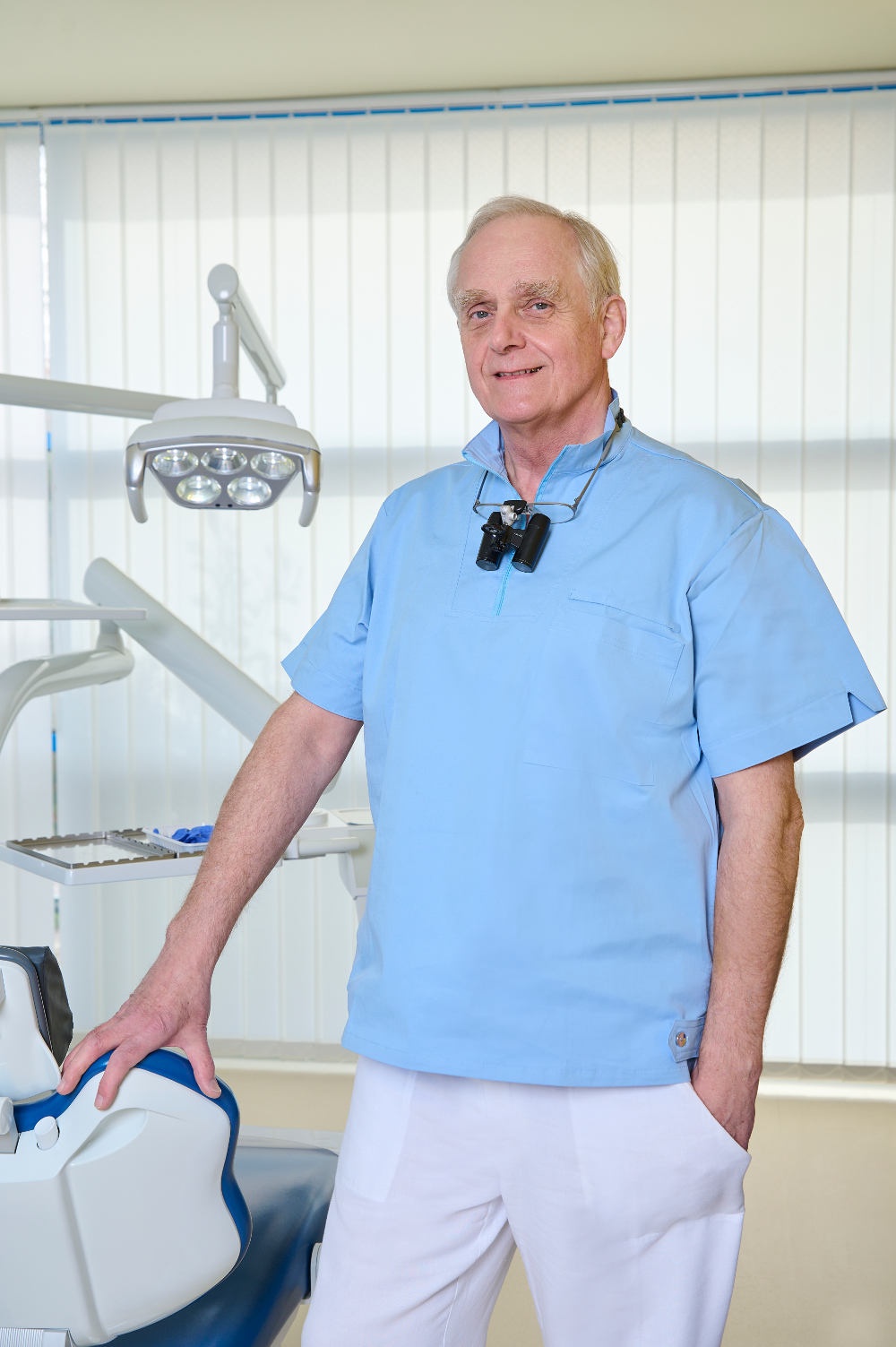
Louis first qualified in 1989 as a General Doctor from Semmelweis Medical University, Budapest. In 1994 he qualified as a General Dentist, qualifying in Maxillo-Facial Surgery in 1999. Since then he has been working exclusively as a Dental Surgeon and his specialist field is Implantology.
Medical Registration Number: 48939
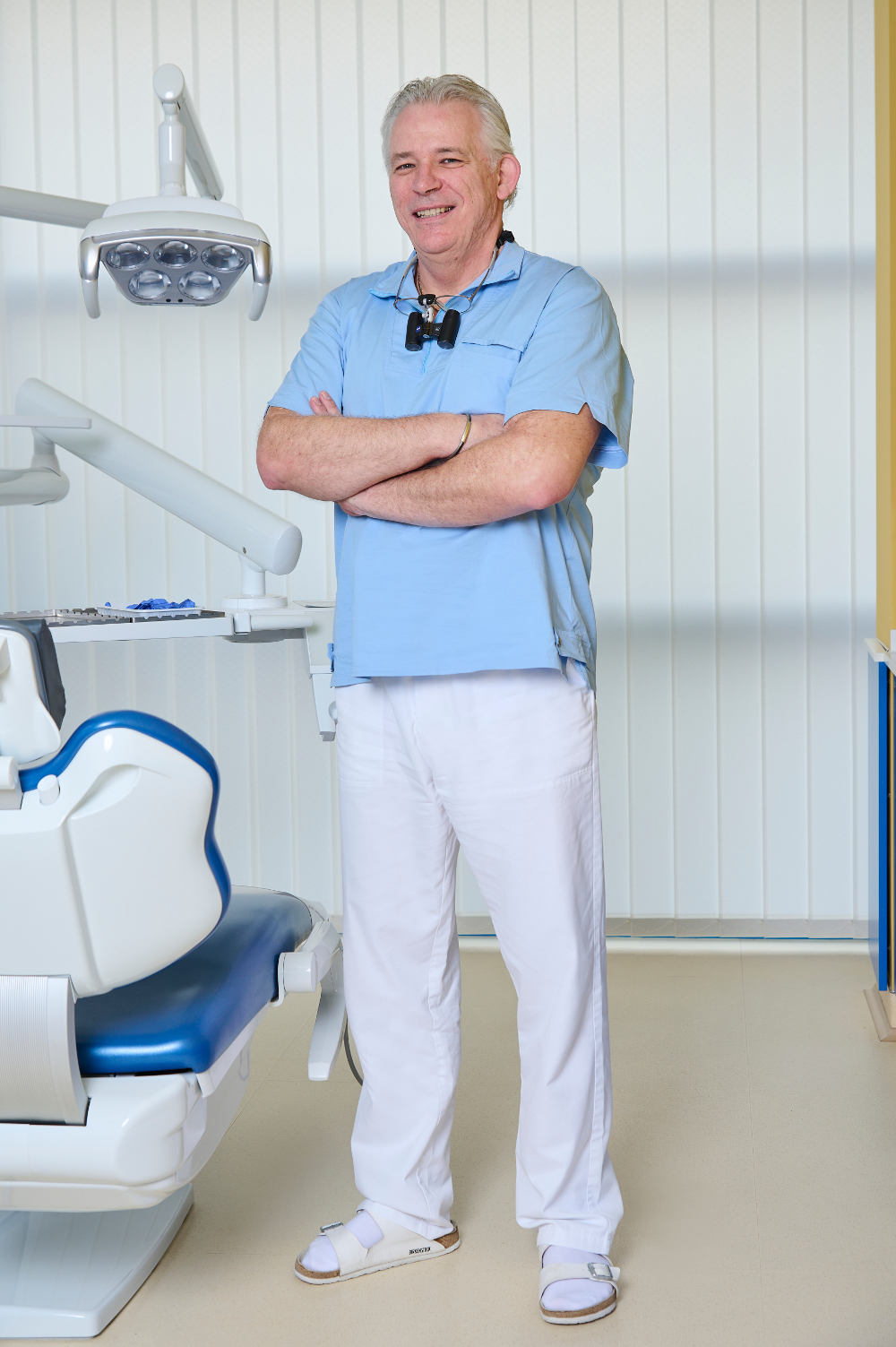
Péter qualified in 1994 from the University of Dentistry, Budapest. He was awarded a Fellowship in Dental Surgery for two years at the University of Dentistry in Vienna. Following several hospital positions in restorative dentistry and oral-maxillo facial surgery where he gained valuable surgical training, he joined our dental team in 1998. His special interest is Cosmetic Dentistry.
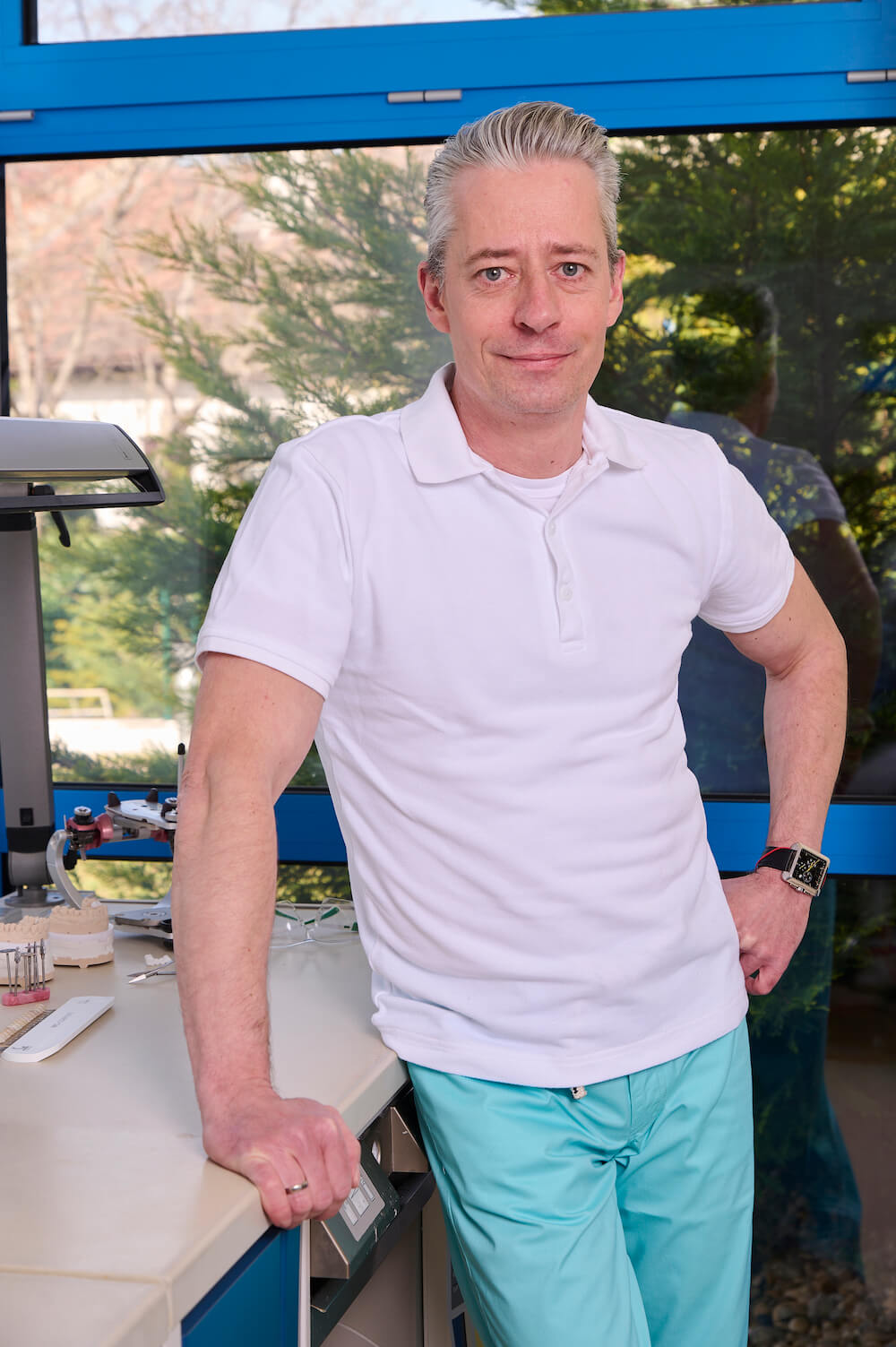
Keve Horváth joined our team of dental technicians. He works in the Ceramic Department as a master ceramist. After he graduated in 1994, he furthered his knowledge from several symposiums in Hungary, Germany and Belgium (for example Noritake and Ivoclar). In 2006 he held a course „Esthetic Front” with a real patient presence, which is a special event in Hungary and also in Europe.
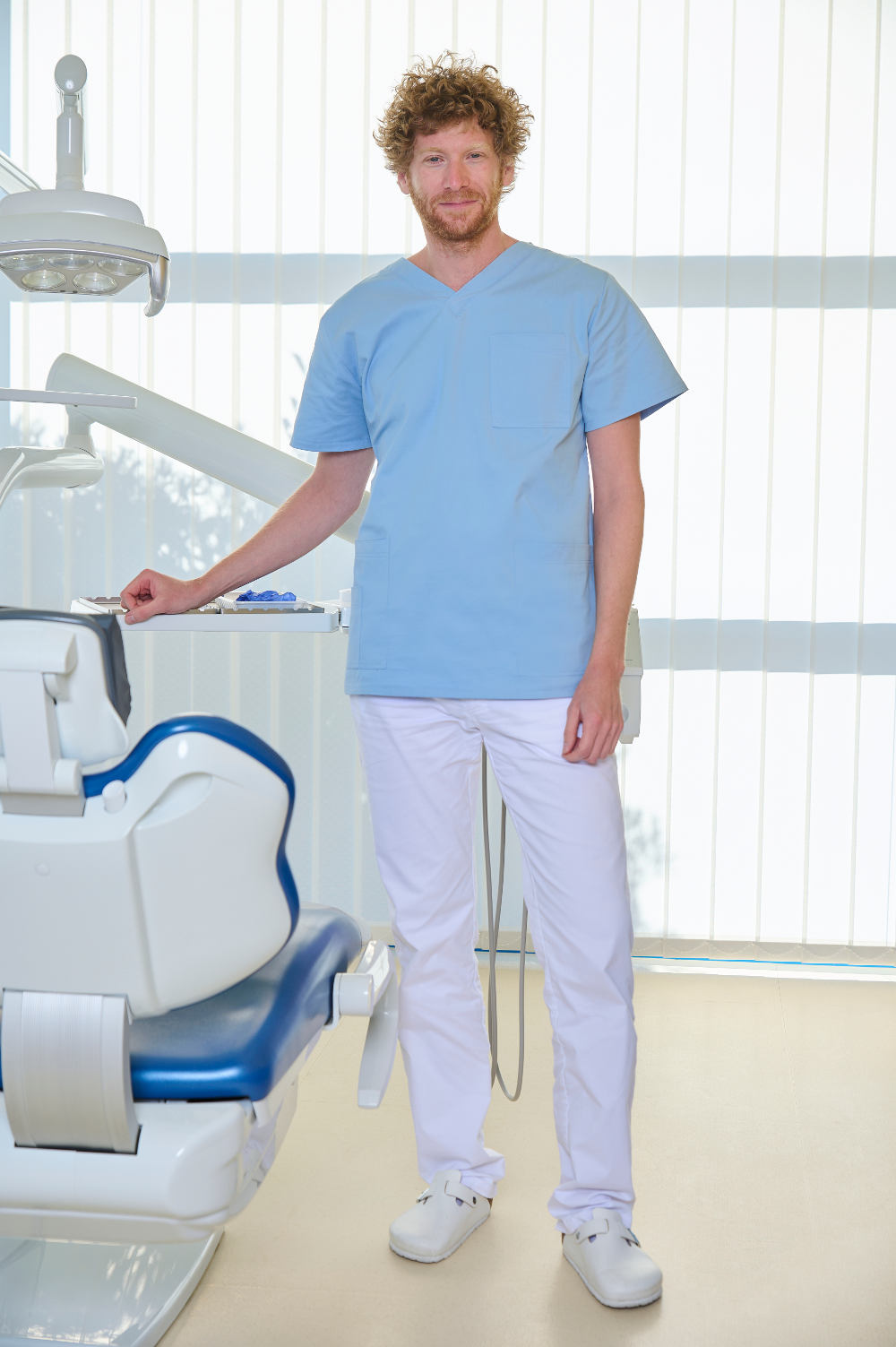
Ádám graduated in 2011 from the Semmelweis University, Faculty of Dentistry. Since then he worked at the Department of Conservative Dentistry, untill he finished a 3 year postgraduate training in conservative dentisty and prosthodontics. He also participated in the education of students both in Hungarian and English language. Ádám joined the Kreativ Dental team in 2014. His special interest is endodontics.
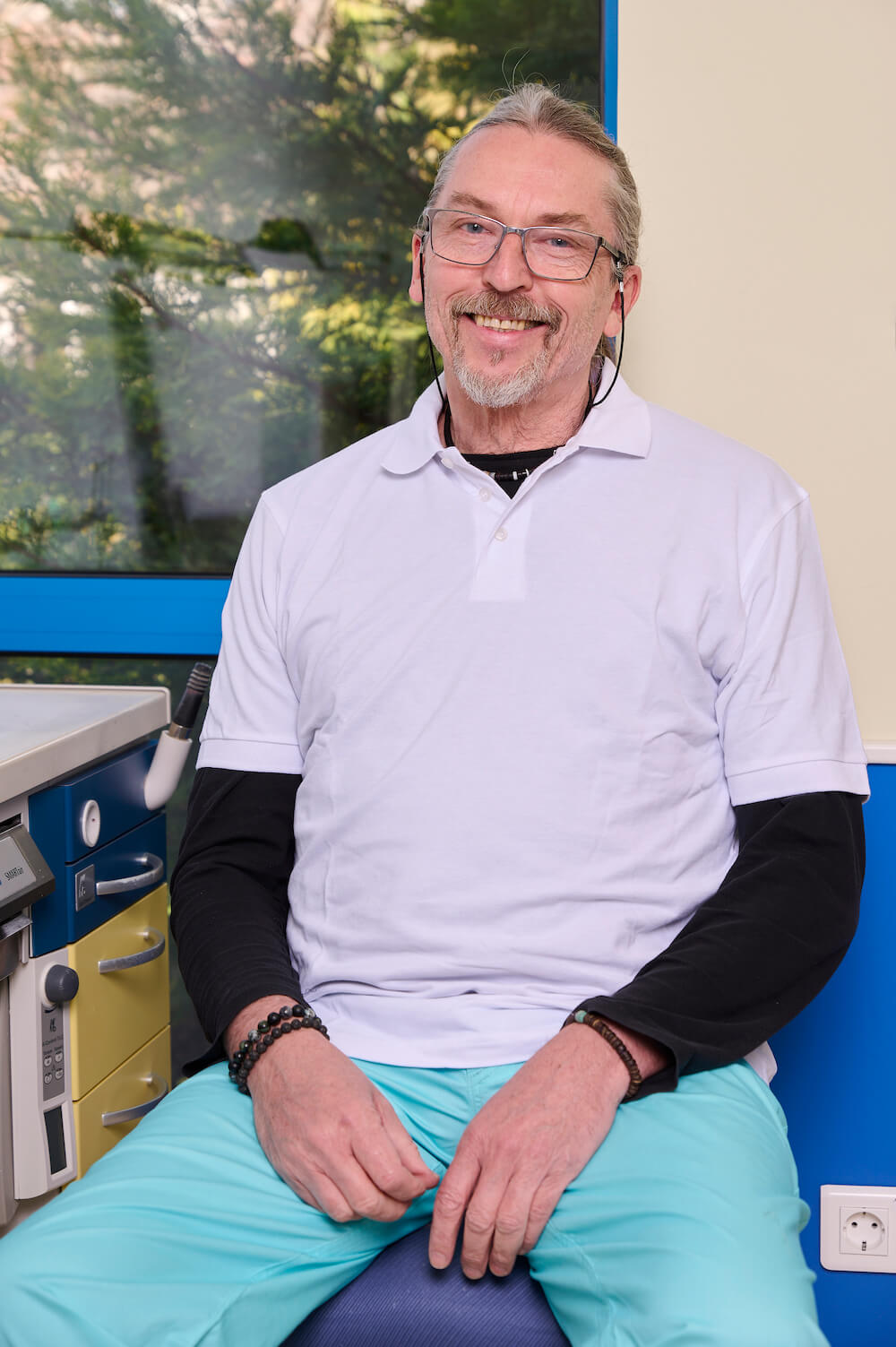
János is Leader of the Ceramic Department where all Porcelain Fused to Metal Crowns, Full Porcelain Crowns, Veneers and Inlays are skillfully crafted. Furthermore, he is one of the few exclusive demonstrators in Europe of the German company Vita which produces the best quality dental porcelain in the world.
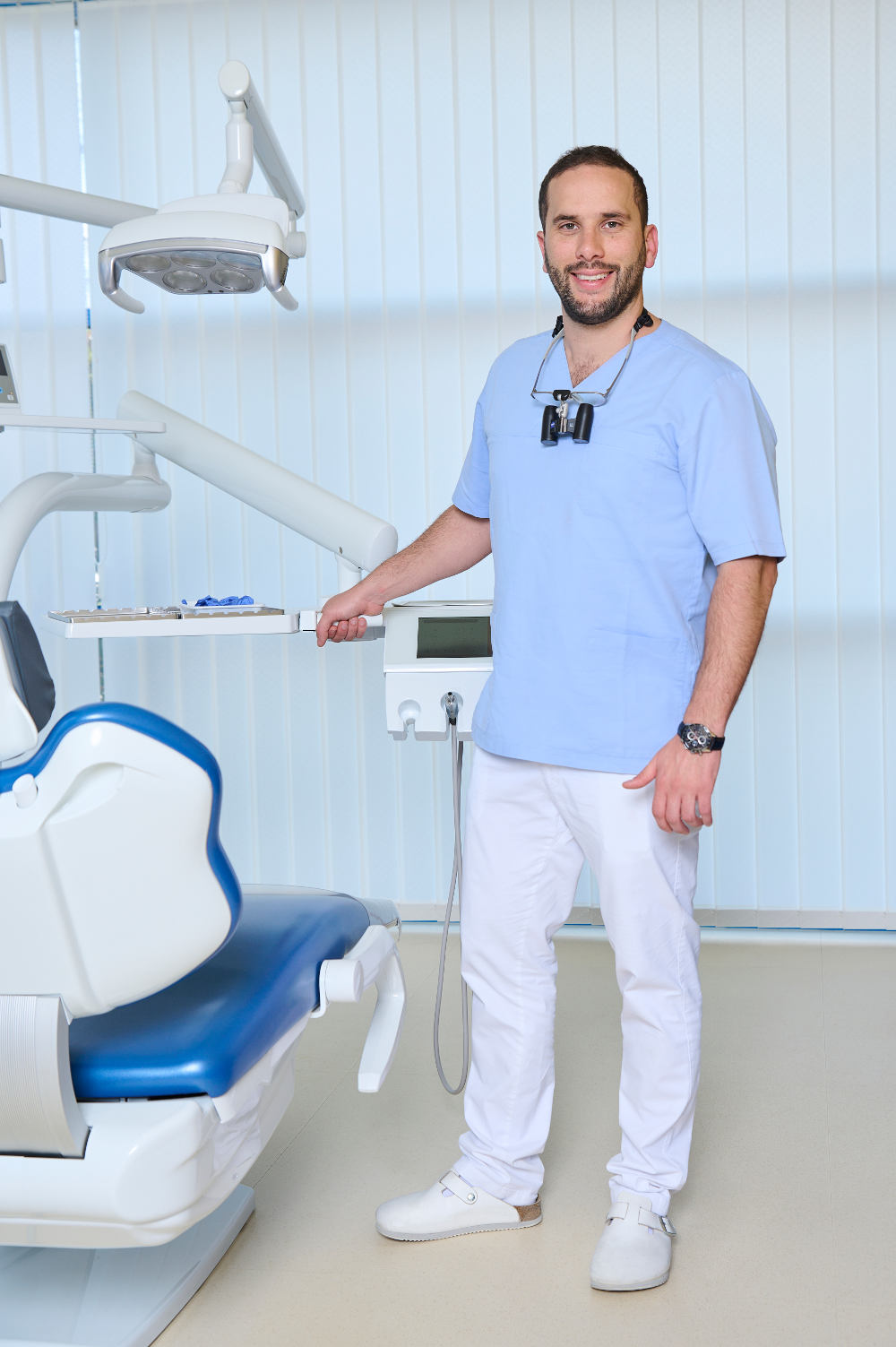
Bernard graduated in 2012 from the Semmelweis University, Faculty of Dentistry. Since then he has worked at the Department of Maxillofacial Surgery at St. John’s Hospital Budapest for 3 years and then obtained his specialization in dentoalveolar surgery in 2015. Meanwhile, he worked in private dentistry as a general dentist.
His special field is oral surgery, implantology and prosthodontics.
He joined the Kreativ Dental team in 2015.
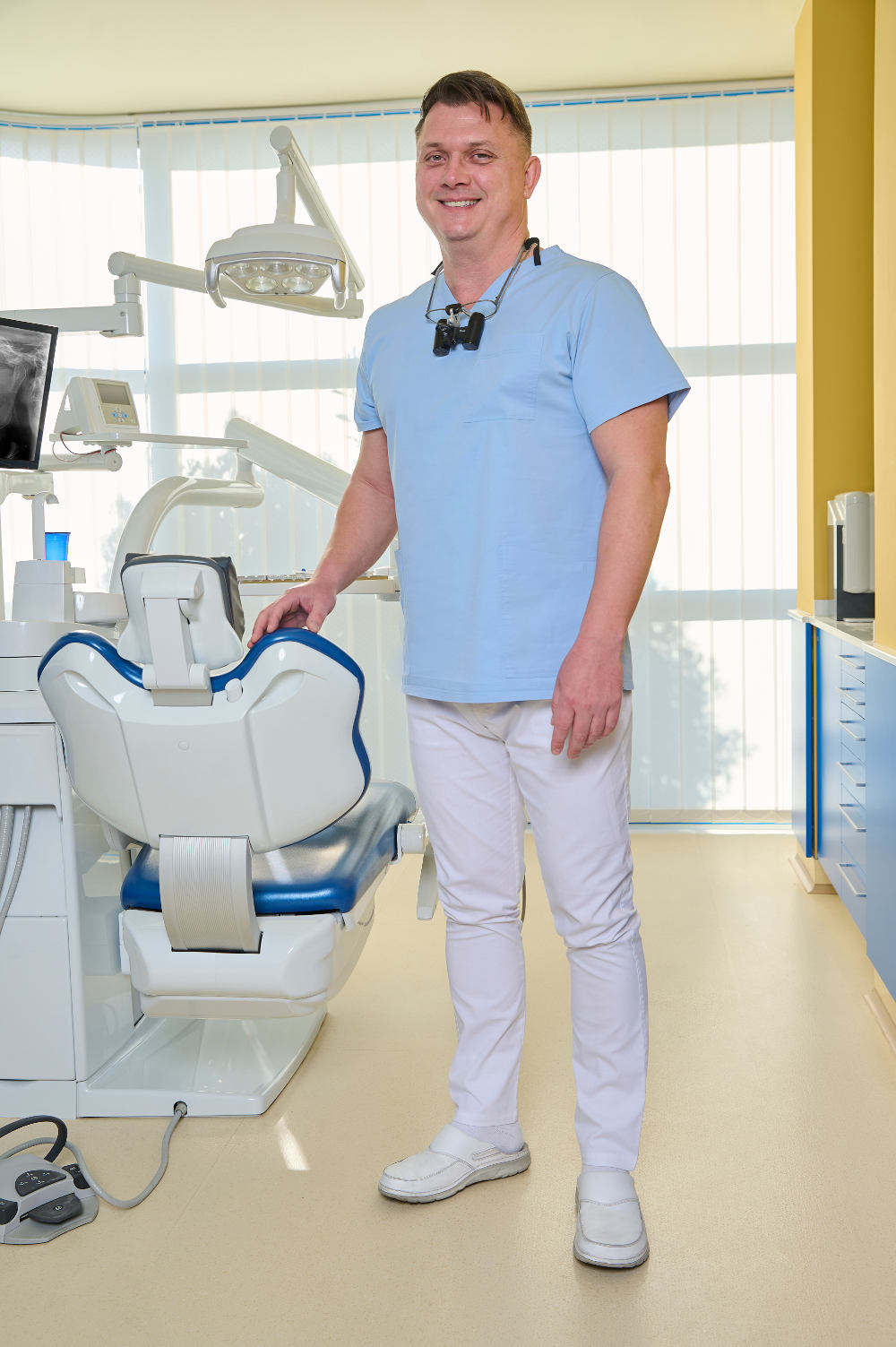
Ádám graduated in 1998 from the University of Szeged. In 2000 he became a Dental Surgeon /Specialist in General Dentistry.
After working as a Dental Surgeon at BKKMi County Hospital, Maxillo-Facial Department, Kecskemét, Hungary between 2000 and 2006, he spent 7 years as private dentist and as General Dental Practitioner in the United Kingdom.
He joined the Kreativ Dental team in 2013.
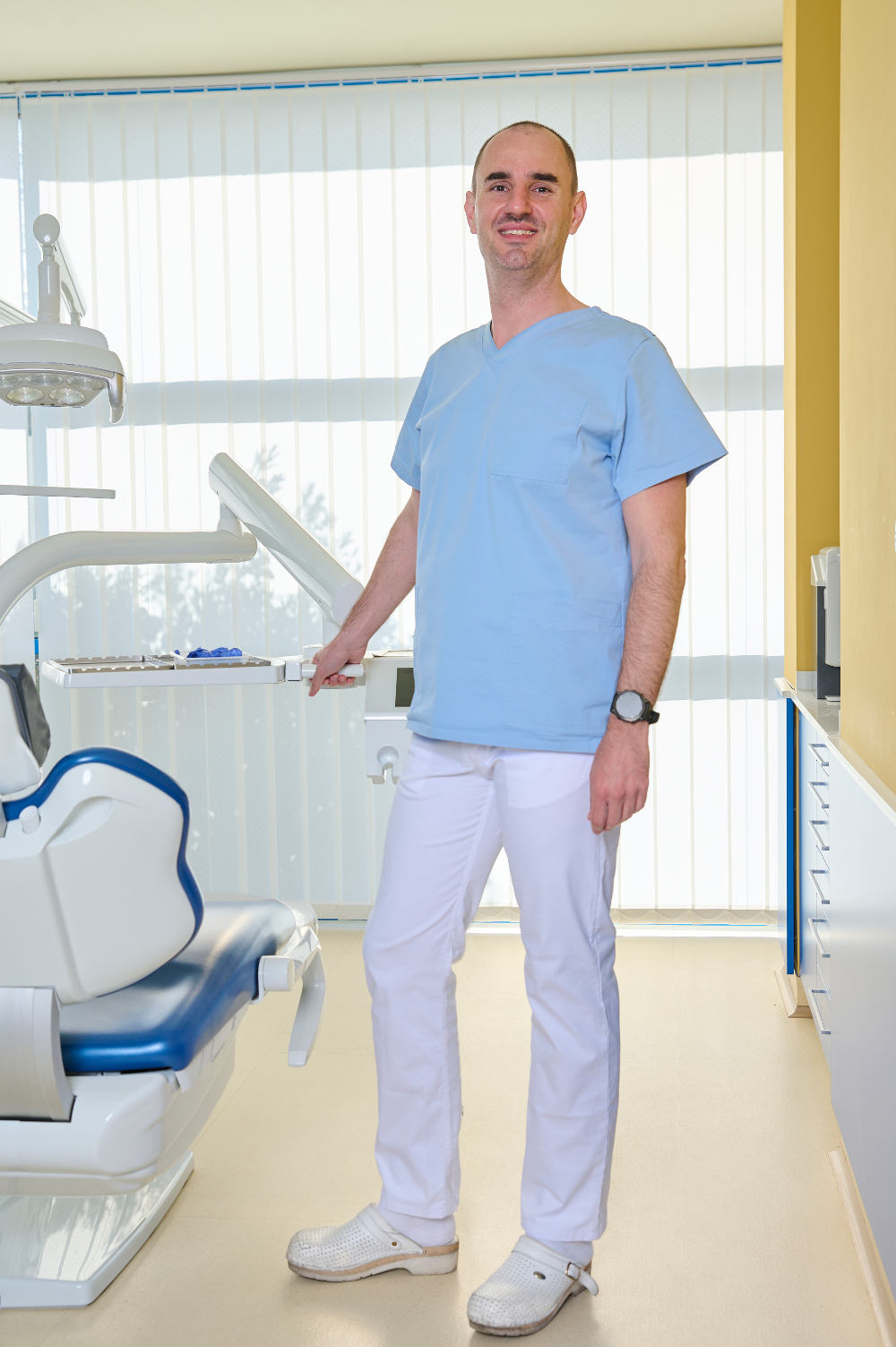
Bálint qualified at Semmelweis University, Faculty of Dentistry in 2007. Since then he has been working at the Department of Periodontology, Semmelweis University, and participates in national and international conferences (Europerio, IADR). He finished his 3 year postgraduate periodontal training in 2010. Bálint joined Kreativ Dental in 2013, his specialist field is periodontal surgery.
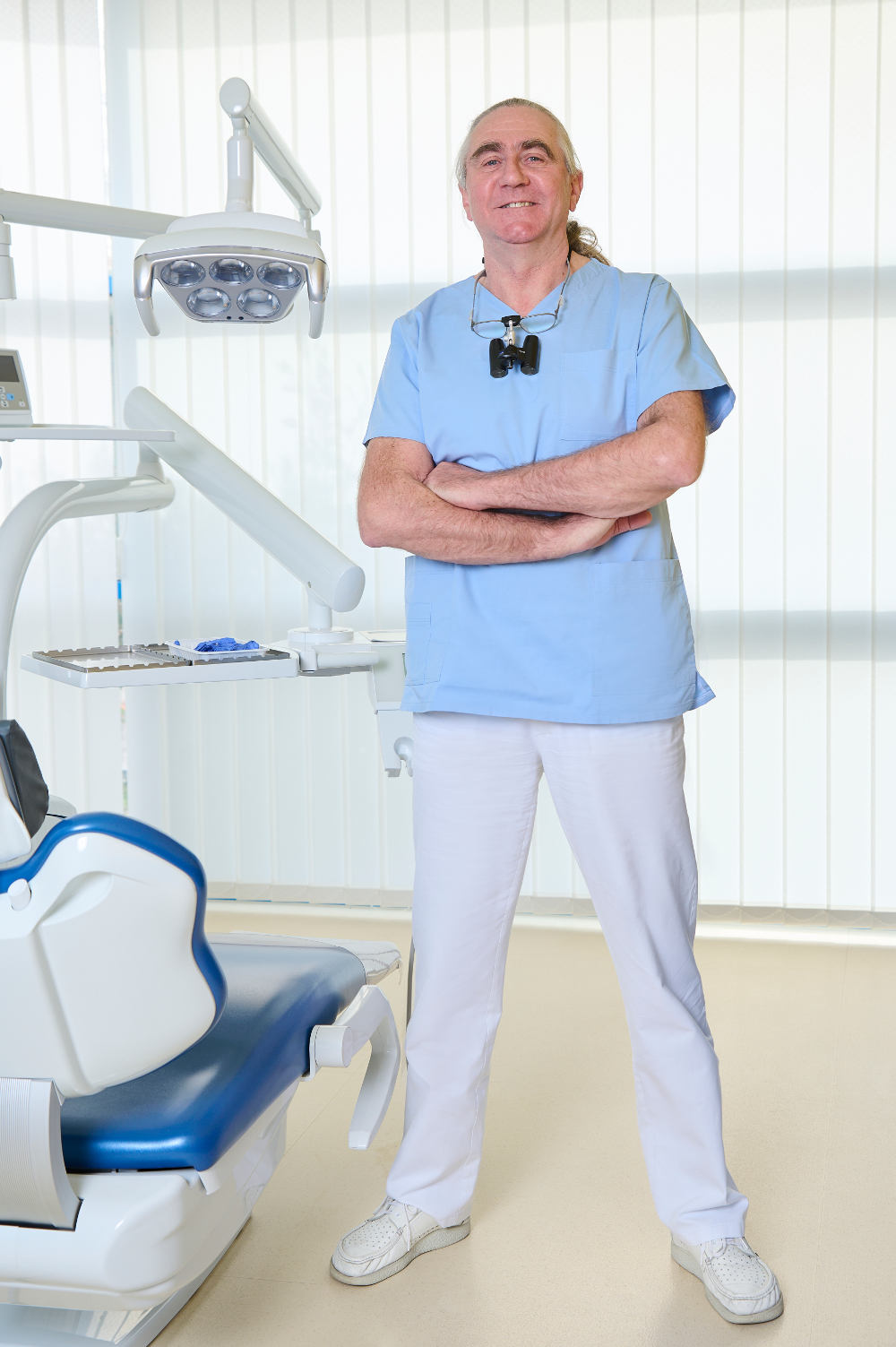
Cristian graduated in 1988 from the Neumarkt Dental School. In 1992 he became a specialist in General Dentistry, and since 1994 has pursued his particular interest in Implantology and Cosmetic Dentistry. Cristian has also achieved the Cambridge First Certificate in English.
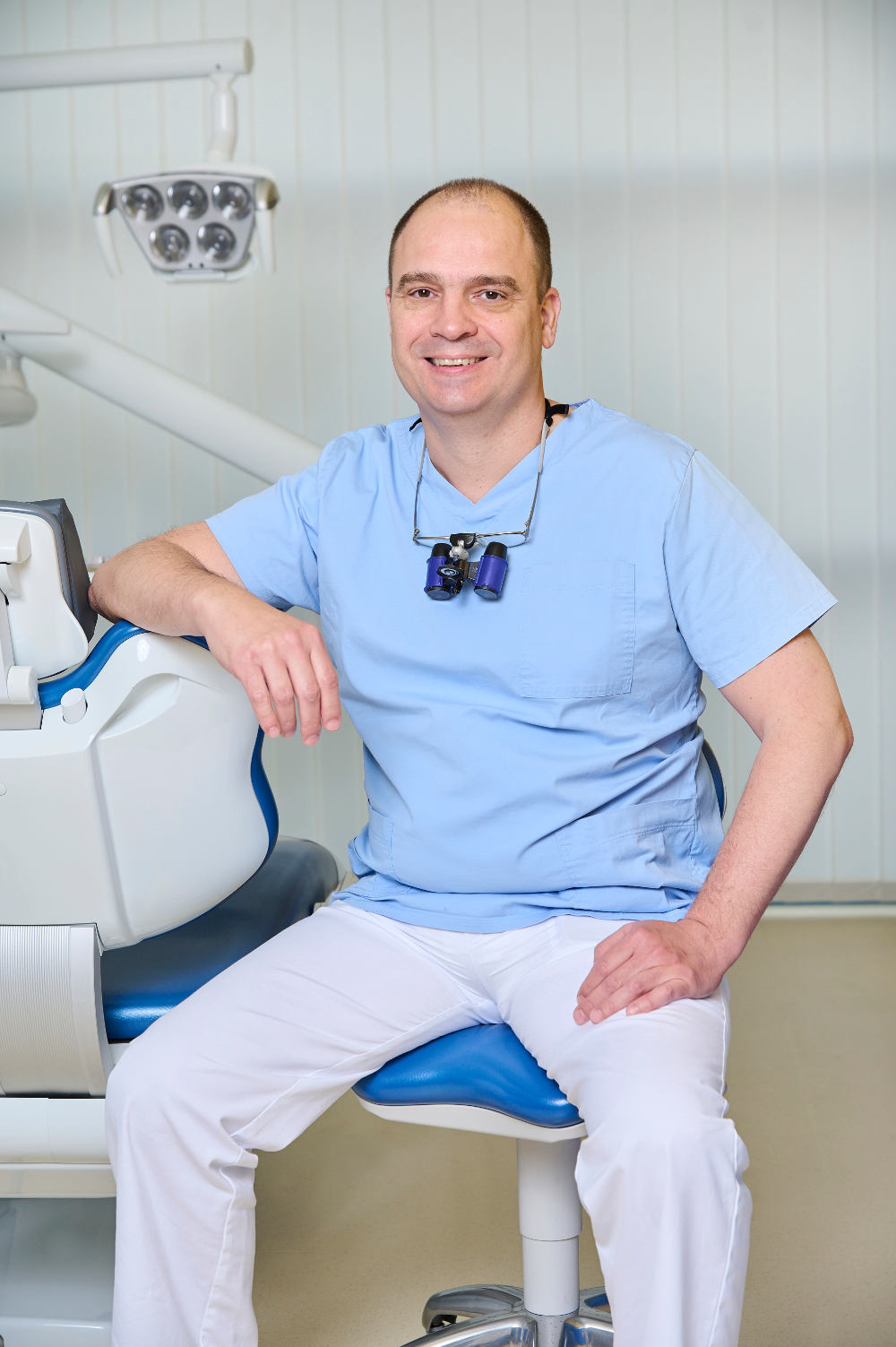
Balázs qualified in 1999 from Semmelweis Medical University as a General Dentist. He then worked for 2 years as a Clinical Dentist. After 6 years experience treating German and Austrian patients in Hungary, he joined Kreativ Dental in 2007. Balázs speaks both English and German.
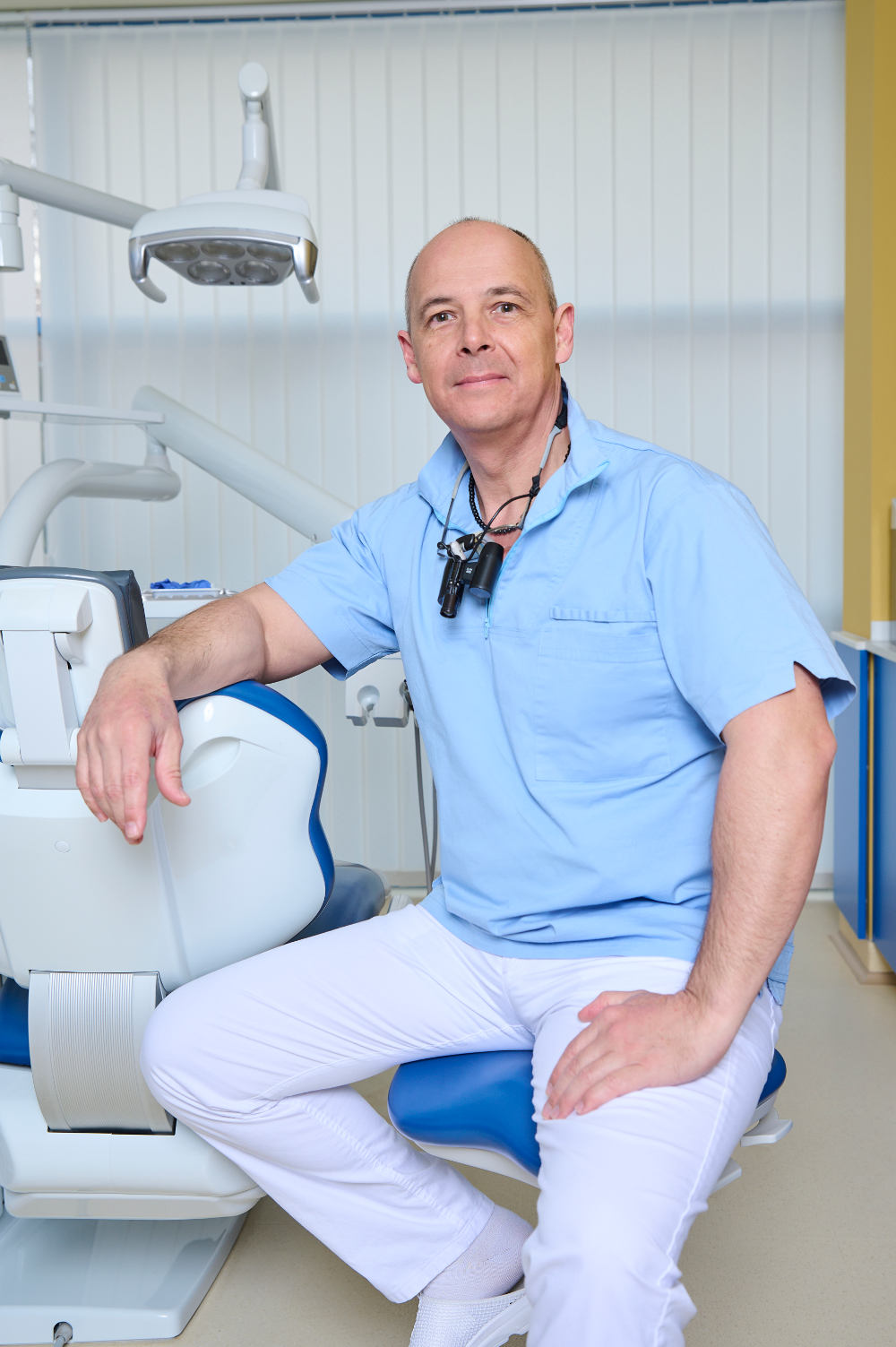
András first qualified in 1992 as a General Dentist from Semmelweis Medical University, Budapest. After becoming a specialist in General Dentistry in 1995, he worked as a private dentist and practiced as a dental surgeon at Rókus Hospital, Budapest. In 1995 he became a specialist in General Dentistry. His specialist field is Crown and Bridgework.
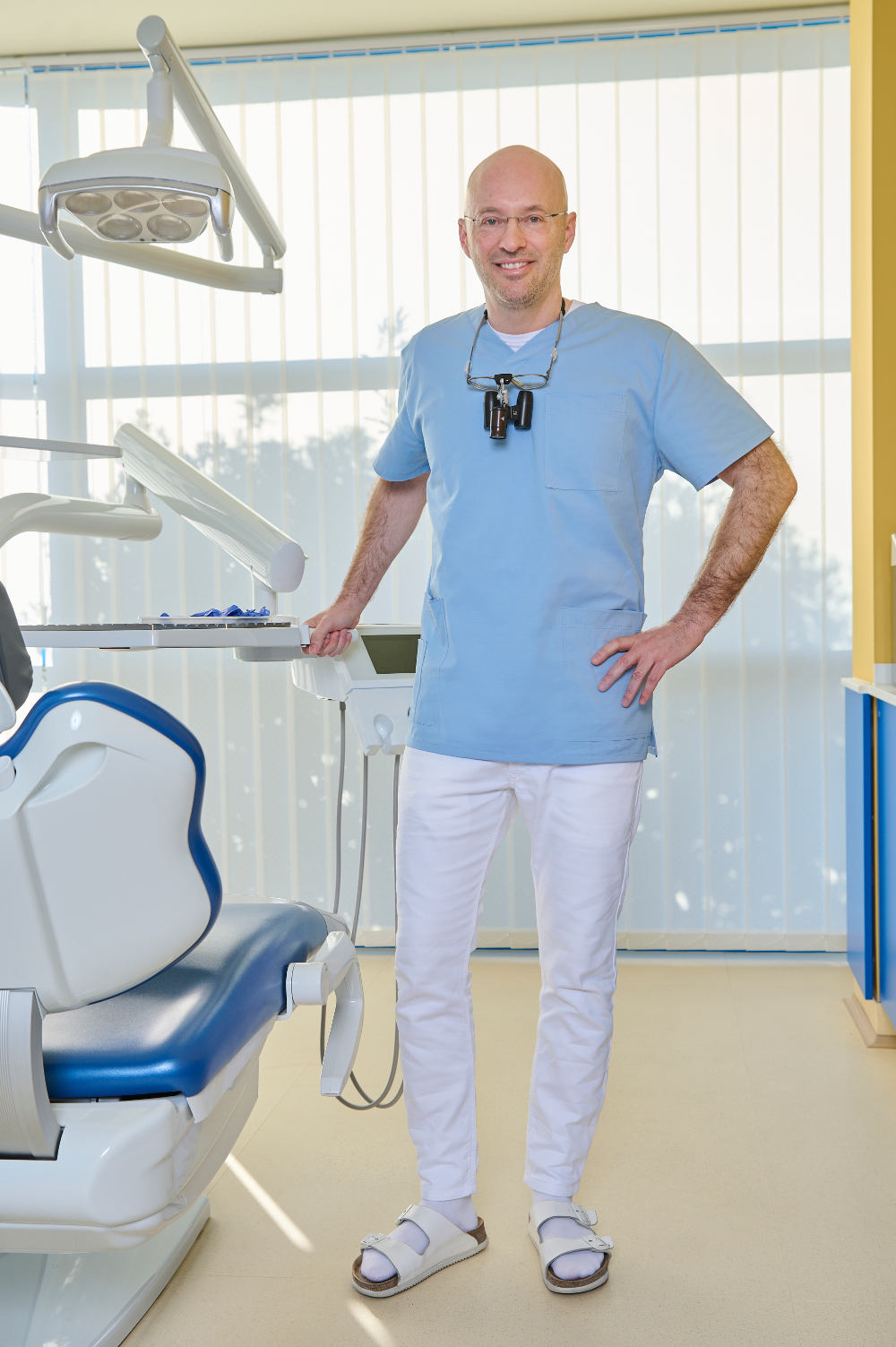
Iván qualified in 2000 from Semmelweis Medical University, Budapest. In 2002 he joined Kreativ Dental after gaining 2 years experience in private practice. His special interests are Endodontics and Cosmetic Dentistry

Keve, maître céramiste, a rejoint notre équipe de techniciens dentaires. il a renforcé ses connaissances en participant à divers symposiums organisés en Hongrie, en Allemagne et en Belgique (par exemple Noritake et Ivoclar). En 2006, Keve a dispensé un cours intitulé « Avant esthétique », présence réelle de patient incluse, considéré comme un événement aussi bien ici, à Budapest, que dans le reste de l’Europe.
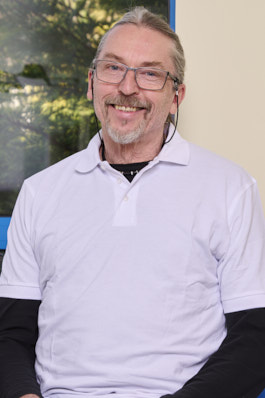
János est le chef du Département céramique où les couronnes céramo-métalliques, les couronnes céramiques pures, les facettes et les inlays sont minutieusement préparés. D’autre part, il fait partie des démonstrateurs, peu nombreux en Europe de l’entreprise allemande Vita, qui produit la meilleure porcelaine dentaire dans le monde.
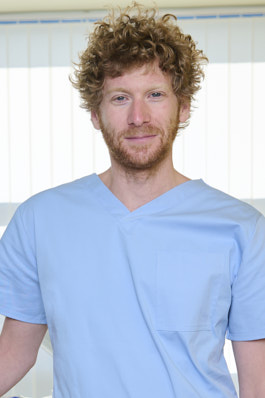
Ádám est diplômé de l’université Semmelweis (Budapest) depuis 2011. Il y a débuté au département dentisterie conservatrice puis effectué ses trois ans de formation post-diplomante en ajoutant la prosthodontique (chirurgie réparatrice) à son arc de compétences. Le docteur Biró a également formé des étudiants en langue anglaise et hongroise. Entré l’année dernière dans l’équipe Kreativ Dental, il s’intéresse particulièrement au cas nécessitant des soins endodontiques (inflammations et infections des canaux dentaires).
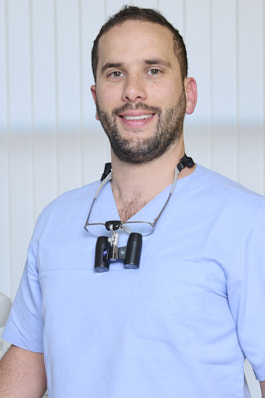
Bernard graduated in 2012 from the Semmelweis University, Faculty of Dentistry. Since then he has worked at the Department of Maxillofacial Surgery at St. John’s Hospital Budapest for 3 years and then obtained his specialization in dentoalveolar surgery in 2015. Meanwhile, he worked in private dentistry as a general dentist.
His special field is oral surgery, implantology and prosthodontics.
He joined the Kreativ Dental team in 2015.
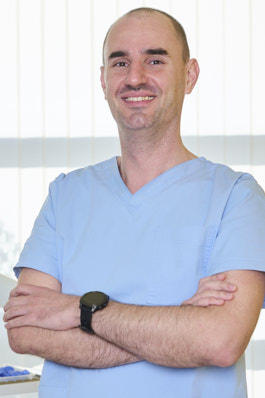
Bálint est diplômé de la faculté de dentisterie de l’université Semmelweis de Budapest depuis 2007. Il a officié sur place au département de périodontologie (soutien des dents) et participe à des conférences nationales et internationales. Le docteur Török a achevé sa formation post-diplomante en 2010 et a rejoint Kreativ Dental trois ans plus tard. Son terrain de prédilection : la chirurgie périodontale.
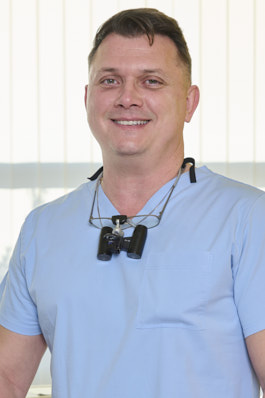
Ádám est diplômé de l’Université de Szeged depuis 1998. En 2000, il est devenu chirurgien dentiste, spécialité dentisterie générale. Après six années au département maxilo-facial de l’hôpital de Kecskemét, il s’est expatrié au Royaume-Uni pour officier en privé. Ádám a intégré Kreativ en 2013.
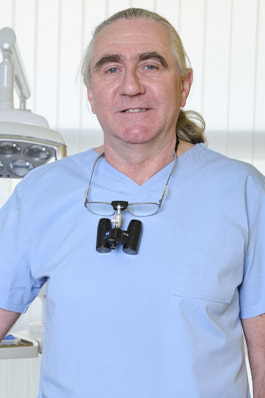
Cristian est diplômé de l’Ecole de médecine dentaire Neumarkt de Saint-Gall (Suisse) depuis 1988. En 1992, il devient spécialiste en dentisterie générale et s’intéresse particulièrement, à partir de 1994, à l’implantologie et à la dentisterie esthétique. De plus, Cristian est titulaire du Cambridge First Certificate de langue anglaise.
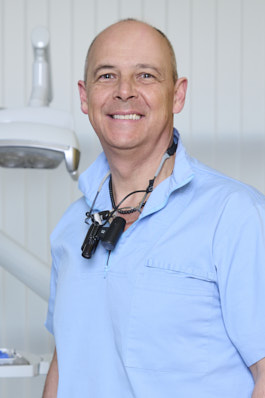
András a obtenu son diplôme de dentiste en Hongrie en 1992 à l’Université de Médecine Semmelweis, à Budapest. Spécialisé en dentisterie générale, depuis 1995, il travaille en tant que privé et pratique la chirurgie dentaire à l’Hôpital Rókus, toujours dans la capitale magyare. La préparation de bridges et de couronnes est l’une de ses principales compétences.
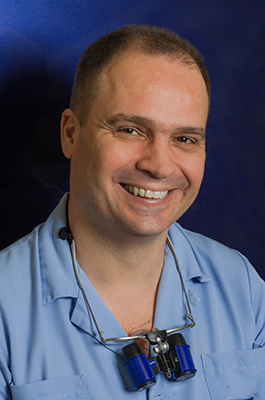
Balázs a obtenu son diplôme de dentiste généraliste en 1999 à l’Université de Médecine Semmelweis. Il a ensuite officié comme dentiste de clinique pendant 2 ans. De 2001 à 2007, il s’est notamment spécialisé dans le traitement des patients allemands et autrichiens en Hongrie, avant d’entrer chez Kreativ Dental. Balázs est anglophone et germanophone.
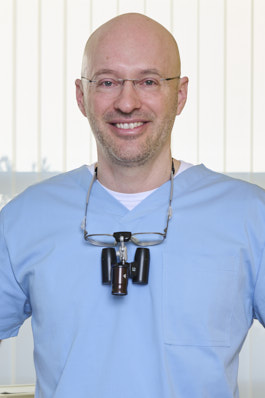
Iván a obtenu son diplôme en 2000 à l’Université de Médecine Semmelweis, à Budapest. Il a intégré Kreativ Dental en 2002, après deux années d’expérience en cabinet privé. L’endodontie et la dentisterie esthétique sont ses sphères de prédilection.
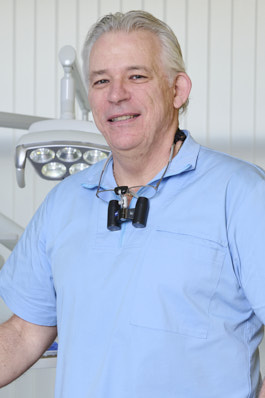
Péter est diplômé de l’Université de médecine dentaire à Budapest depuis 1994. Il a obtenu une bourse de recherche de deux ans à l’Université de médecine dentaire de Vienne. Ayant officié en dentisterie restauratrice, buccale et maxillo-faciale dans plusieurs hôpitaux, ce professionnel a acquis une expérience importante en chirurgie et finalement rejoint notre équipe en 1998. Son domaine de spécialisation : la dentisterie esthétique.
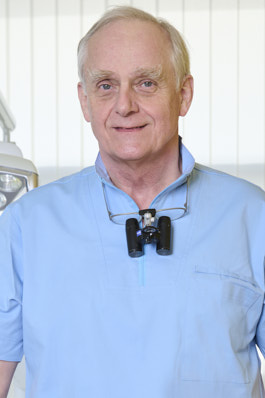
Lajos a décroché son diplôme en médecine générale en 1989 à l’Université de médecine Semmelweis, à Budapest. En 1994, il a obtenu sa qualification de dentiste généraliste et, cinq ans plus tard, sa certification en chirurgie maxillo-faciale. Depuis, il pratique exclusivement la chirurgie dentaire et s’est spécialisé dans l’implantologie.
Numéro d’inscription médicale : 48939